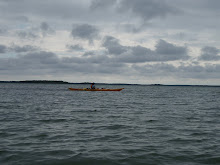


Yet again, dear readers, I am sure the title of today's blog confuses you. Don't fear, all will be explained to you.
This past weekend was delightfully full of field trips with the study group and the Geier family. We started out bright and early on Saturday and headed to the small town of Neath, where we visited the Neath Abbey and the Neath Abbey Iron works. We then took a break for lunch, and visited Aberdulais Falls, which is the site of an old Tin Plating factory. The next day, we visited the famous Stonehenge, then spent a very pleasant and sunny afternoon wandering around the ancient town of Bath. We enjoyed high tea and had scones with clotted cream. Yum!
This is probably the briefest overview of a weekend I have done on this blog yet, and there are certainly many wonderful stories of our adventures that I could fill the space with (like me falling in the river, our charming guide at the falls, the mystery of Stonehenge and the ridiculousness of audio guides).
Instead, I'm going to take things a little differently. This weekend had a profound impact on me, for several reasons. The first, and most easily explained is how wonderful it is to be with my study group. I feel blessed everyday to get to explore with such truly wonderful people! I cannot sing their virtues enough; we had to tramp through a fair bit of mud and dog poop to get to the Ironworks at Neath, but every single person got something out of the trip and had a great time. That night, some of us got together and made breakfast for dinner. Besides it being a veritable feeding frenzy ( we consumed upwards of 36 pancakes and at least 20 eggs) we had a great time cooking for each other, sharing stories, and singing our old camp songs loudly. Very loudly. Thank you Sammy for cleaning! It is so nice to feel part of a close group, even though it is a microcosmic Colgate bubble.
The main point of this blog is the very interesting contrast between the pile of rocks that is what remains of the Neath Abbey Ironworks and the PILE OF ROCKS that is Stonehenge. These two places offered up so many interesting questions: why do we preserve what we preserve? How do we survive and make a better life for ourselves, while sustaining a balance with nature? To what extent do we alter what we chose to restore, meaning, how far do we go to reconstruct, and how does reconstruction take away from what history, time, and nature has brought to ruin? And finally, what will my generation's legacy be? Will the rather obscure history of the Neath Abbey Ironworks be lost, just like the history of stonehenge is lost?
How quickly the details of history are lost. Stonehenge has stood for thousands of years, just a blink in time. We don't know its purpose or how it was built. Now, a roped off path circles it at a modest, warning distance. Myths and stories abound and people come in flocks to stare and wonder. Soggy rocks and tourists in the middle of nowhere. Not so far away is Neath, a town that boasts its own pile of soggy rocks. Here, a bubble of history is about to burst. Nature crawls in as thick thorns and vines, covering the remains of an old Ironworks that used to be the pride of the region. Trash and dog crap layers the ground. The ghostly lives of the owners, workers, the boys whose job it was to break up coal for hours slink among the natural beauty that is sneaking its way back into this place once tamed by man. These ghosts fight the sticky vines and prickers, but they are fighting a losing battle. No one visits this site, really, except for a scrappy group of college kids from New York who read a perfectly obscure out-of-print book about a perfectly obscure out- of-use place. They ask, is this place really that important? Why go to a place no one cares about? No one bothers to pick up the trash, no one bothers to reconstruct the buildings. The ghosts are reckless. Their lives are fading, while the ghosts of the ancient people who built Stonehenge glory in manicured lawns and audio tours.
We were also lucky to be led around Aberdulais Falls by a charming and enthusiastic elderly man named Doug. He had grown up in Neath, and educated us on all things regarding the falls. He told us that when he was little, he would climb down the steep hill, cross over the ruins of the tinplating workshop that were, at the time, invaded by nature as well, to swim in the pool below the falls. He told us how he would emerge from the pool covered in coal dust from the mines up the way. He told us that when The National Trust (I think thats what its called) came in and attempted to rebuild the site, they had to pull a large tree out of the ground that had been sneaking its roots through the ruined piles of rock that was the old tinplating factory. He told us some of the stories of the people who worked there, of children who spent their childhoods wiping grease off of tin sheets. He loves this place, he loves its history. Compare this to our walk around stonehenge where we were all glued to silly audio guides. I dont think Aberdulais falls gets many visitors. Which place has more value? Can we really make that judgement?

No comments:
Post a Comment